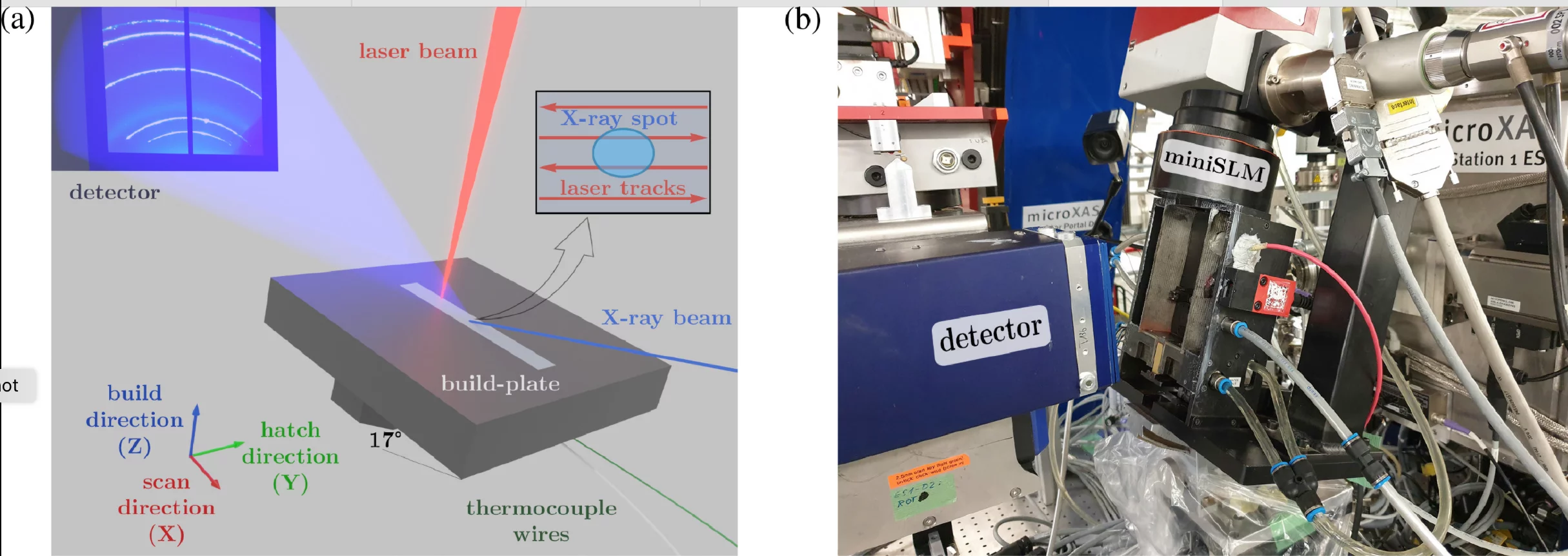The microstructure, properties and residual stress state of 3D printed components may be very different to conventionally manufactured parts. One of main differences lies in the thermal history experienced by the material during the build process. In this work, we demonstrate the power and limitation of operando X-ray diffraction as a tool to measure the temperature during printing.
In laser powder bed fusion (LPBF), complex components are manufactured layer-by-layer via scanning the cross-sections of a 3D CAD model using a high intensity laser. Throughout this process, the material is exposed to temperature profiles that significantly differ from conventional manufacturing methods, and result in development of a unique and inhomogeneous microstructure and high levels of residual stresses in additively fabricated parts. The large temperature gradients and rapid cooling rates around the moving laser spot, and the overall heterogeneity of the temperature field need to be better understood in order to optimize the process parameters for increased production quality.
In a collaborative effort, researchers from EMPA, PSI, ETHZ and ZHAW have employed operando X-ray diffraction (XRD) to measure and compare temperature histories on the laser path under various processing conditions for Hastelloy X. Finite element thermal simulations were validated based on the acquired XRD data and then used as a supplementary tool to discuss the cooling behaviour and thermal heterogeneities across the geometry. The increase in the deposited energy density was qualitatively linked with higher temperature levels and slower cooling rates during LPBF. The melt-pool lengths showed strong sensitivity to the laser power and little variation with the scanning speed. Furthermore, even for a single set of parameters, large variations in the temperature field within the build were observed such that the cross-section edges located at higher build layers were exposed to markedly higher temperature levels.
The measurements were performed at the MicroXAS beam line of the Swiss Light Source. The project was funded by the Swiss National Science Foundation.
Contact
Dr. Steven Van Petegem
Structure and Mechanics of Advanced Materials
Photon Science Division
Paul Scherrer Institute
Forschungsstrasse 111, 5232 Villigen PSI, Switzerland
Telephone: +41 56 310 2537
E-mail: steven.vanpetegem@psi.ch
Original publication
A close look at temperature profiles during laser powder bed fusion using operando X-ray diffraction and finite element simulations
Pooriya Gh Ghanbari, Patrik Markovic, Steven Van Petegem, Malgorzata Grazyna Makowska, Rafal Wrobel, Thomas Mayer, Christian Leinenbach, Edoardo Mazza, Ehsan Hosseini
Additive Manufacturing Letters (2023)
DOI: 10.1016/j.addlet.2023.100150


